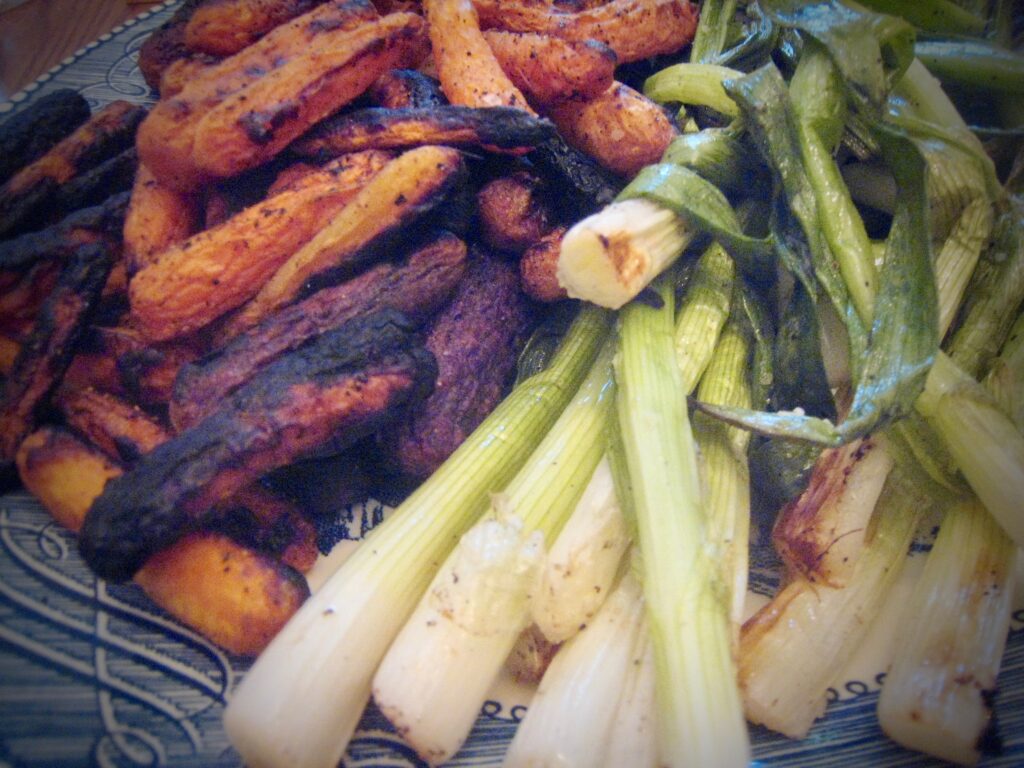Sunday Dinner – 22 July 2018
 For Sunday Dinner this week, we pulled a Boston Butt out of the deepfreeze and did a long cook.
For Sunday Dinner this week, we pulled a Boston Butt out of the deepfreeze and did a long cook.
It was a 5 1/4 pound pork shoulder that we’d gotten on sale some time when Ultra Foods was still in business here. I remembered to get it out of the freezer on Thursday evening so it would be thawed well enough to season on Saturday evening. Here’s my rub recipe.
- 2 t Black Pepper
- 2 t Mustard
- 2 T Turbinado Sugar
- 1 t Onion Powder
- 1 t Garlic Powder
- 1 t Paprika
- 1 T Kosher Salt
I use this mainly for ribs and pulled pork, but it would also be fine for brisket or other cuts that get rubbed for smoking.
I also made a batch of Wolfe Pit Cole Slaw, and some Carolina Mustard BBQ Sauce Saturday Night. Here’s the recipe for that.
- 1 C Yellow Mustard
- 1/4 C Apple Cider Vinegar
- 1/4 C Brown Sugar
- 2 T Ketchup
- 1 T Soy Sauce
- 1 T Worcestershire
- 1 T Crystal Sauce
Usually with the pulled pork I would cook up a pot of baked beans, and maybe serve some potato salad or macaroni salad alongside. But this week Aunt Pat brought us a baker’s dozen of fresh sweet corn from Hersher, so I saved back some ears for the meal. We generally cook our roastin’ ears on the grill nowadays, but I boiled these up in a big pot with a little salt, the old fashioned way, and they were delicious, smothered in butter. One of the cool things about living in Kankakee County is the incredibly sweet Hersher corn on the cob.
I was up shortly after 5:30 AM on Sunday to get the grill going. I set it up for the long cook as usual, with ten unlit briquettes on each side of a water pan, then adding four lit coals to each side, along with some wood chunks. Hickory and Apple are my choice most of the time for pork. The kettle was smoking steady at 225°F by twenty after six, and ready for the roast. I turned and mopped it every hour for the first four hours, using a spray bottle of coffee, cider vinegar and Maibock. After four hours, it was reading 135°F in the center, so I wrapped it in aluminum foil, moved all of the charcoal to one side of the grill, and added some additional briquettes to get the temperature up a bit. After another two hours, the roast was still only at 165 (and it had begun to rain pretty steadily outside) so I brought it in to finish in a 350°F oven. It took another hour-and-a-half to get up to around 190, which was my target temp for this cook. We let it rest for another half-an-hour before Claudia shredded it with the Kassa Claws.
The sweet corn, slaw and sandwich (on a Kaiser Roll topped with dill chips and Carolina Sauce) made for a pretty plate. Unfortunately, a problem between my camera and computer resulted in the loss of what would have been a nice photo to share. Rest assured that it was all plenty delicious. We also had a couple bags of chips, some Blues Hog Tennessee Red Sauce, and our old standby Sweet Baby Ray’s on hand at the table.
I’ve never been quite satisfied with the slaw recipe, so I think I might try a different one next time. Although this one came out better than previous attempts, it doesn’t match the sweet, creamy goodness of what I remember my mom making when I was a child. Otherwise, this meal was perfect. Wines were Cali Merlots from Intertwine and Karen Birmingham.
The older set played cribbage while Claudia and I took well-deserved, overdue short naps, then we enjoyed a nice banana cream pie that Aunt Pat brought for dessert.








 For Fathers Day this year I did another long cook. Our Jewel store had St. Louis Cut Spareribs on sale two racks for the price of one, so
For Fathers Day this year I did another long cook. Our Jewel store had St. Louis Cut Spareribs on sale two racks for the price of one, so  There’s something magical and Zen-like about a long cook. The smell of the smoke and the sight of it wafting over the patio is an experience unto itself. It’s satisfying to know that you’ve acquired the skill necessary to maintain an even temperature over several hours of cooking, and the other fairly specific skills needed to turn out a perfect plate of ribs. The pace of the cook affords time for relaxation and proper anticipation of the delicious meal to come.
There’s something magical and Zen-like about a long cook. The smell of the smoke and the sight of it wafting over the patio is an experience unto itself. It’s satisfying to know that you’ve acquired the skill necessary to maintain an even temperature over several hours of cooking, and the other fairly specific skills needed to turn out a perfect plate of ribs. The pace of the cook affords time for relaxation and proper anticipation of the delicious meal to come.
